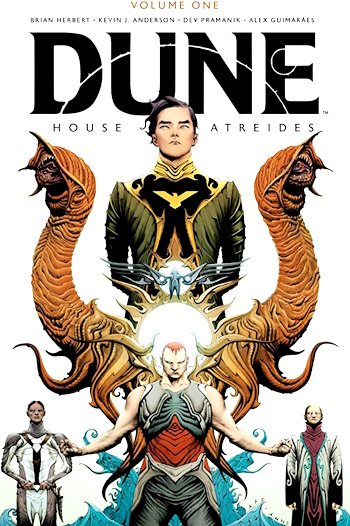Steve Jobs by Walter Isaacson 172
CHAPTER TWELVE
Steve Jobs by Walter Isaacson 173
THE DESIGN
Real Artists Simplify
A Bauhaus Aesthetic
Unlike most kids who grew up in Eichler homes, Jobs knew what they were and why they were so wonderful. He liked the notion of simple and clean modernism produced for the masses. He also loved listening to his father describe the styling intricacies of various cars. So from the beginning at Apple, he believed that great industrial design—a colorfully simple logo, a sleek case for the Apple II—would set the company apart and make its products distinctive.
The company’s first office, after it moved out of his family garage, was in a small building it shared with a Sony sales office. Sony was famous for its signature style and memorable product designs, so Jobs would drop by to study the marketing material. “He would come in looking scruffy and fondle the product brochures and point out design features,” said Dan’l Lewin, who worked there. “Every now and then, he would ask, ‘Can I take this brochure?’” By 1980, he had hired Lewin.
His fondness for the dark, industrial look of Sony receded around June 1981, when he began attending the annual International Design Conference in Aspen.
The meeting that year focused on Italian style, and it featured the architect-designer Mario Bellini, the filmmaker Bernardo Bertolucci, the car maker Sergio Pininfarina, and the Fiat heiress and politician Susanna Agnelli. “I had come to revere the Italian designers, just like the kid in Breaking Away reveres the Italian bikers,”
recalled Jobs, “so it was an amazing inspiration.”
In Aspen he was exposed to the spare and
Steve Jobs by Walter Isaacson 174
functional design philosophy of the Bauhaus movement, which was enshrined by Herbert Bayer in the buildings, living suites, sans serif font typography, and furniture on the Aspen Institute campus. Like his mentors Walter Gropius and Ludwig Mies van der Rohe, Bayer believed that there should be no distinction between fine art and applied industrial design. The modernist International Style championed by the Bauhaus taught that design should be simple, yet have an expressive spirit. It emphasized rationality and functionality by employing clean lines and forms.
Among the maxims preached by Mies and Gropius were “God is in the details” and “Less is more.” As with Eichler homes, the artistic sensibility was combined with the capability for mass production.
Jobs publicly discussed his embrace of the Bauhaus style in a talk he gave at the 1983 design conference, the theme of which was “The Future Isn’t What It Used to Be.” He predicted the passing of the Sony style in favor of Bauhaus simplicity. “The current wave of industrial design is Sony’s high-tech look, which is gunmetal gray, maybe paint it black, do weird stuff to it,” he said. “It’s easy to do that. But it’s not great.”
He proposed an alternative, born of the Bauhaus, that was more true to the function and nature of the products. “What we’re going to do is make the products high-tech, and we’re going to package them cleanly so that you know they’re high-tech. We will fit them in a small package, and then we can make them beautiful and white, just like Braun does with its electronics.”
He repeatedly emphasized that Apple’s products would be clean and simple. “We will make them bright and pure and honest about being high-tech, rather than a heavy industrial look of black, black, black, black, like Sony,” he preached. “So that’s our approach. Very simple, and we’re really shooting for Museum of
Steve Jobs by Walter Isaacson 175
Modern Art quality. The way we’re running the company, the product design, the advertising, it all comes down to this: Let’s make it simple. Really simple.” Apple’s design mantra would remain the one featured on its first brochure: “Simplicity is the ultimate sophistication.”
Jobs felt that design simplicity should be linked to making products easy to use. Those goals do not always go together. Sometimes a design can be so sleek and simple that a user finds it intimidating or unfriendly to navigate. “The main thing in our design is that we have to make things intuitively obvious,” Jobs told the crowd of design mavens. For example, he extolled the desktop metaphor he was creating for the Macintosh. “People know how to deal with a desktop intuitively. If you walk into an office, there are papers on the desk. The one on the top is the most important.
People know how to switch priority. Part of the reason we model our computers on metaphors like the desktop is that we can leverage this experience people already have.”
Speaking at the same time as Jobs that Wednesday afternoon, but in a smaller seminar room, was Maya Lin, twenty-three, who had been catapulted into fame the previous November when her Vietnam Veterans Memorial was dedicated in Washington, D.C.
They struck up a close friendship, and Jobs invited her to visit Apple. “I came to work with Steve for a week,” Lin recalled. “I asked him, ‘Why do computers look like clunky TV sets? Why don’t you make something thin?
Why not a flat laptop?’” Jobs replied that this was indeed his goal, as soon as the technology was ready.
At that time there was not much exciting happening in the realm of industrial design, Jobs felt.
He had a Richard Sapper lamp, which he admired, and he also liked the furniture of Charles and Ray Eames
Steve Jobs by Walter Isaacson 176
and the Braun products of Dieter Rams. But there were no towering figures energizing the world of industrial design the way that Raymond Loewy and Herbert Bayer had done. “There really wasn’t much going on in industrial design, particularly in Silicon Valley, and Steve was very eager to change that,” said Lin. “His design sensibility is sleek but not slick, and it’s playful.
He embraced minimalism, which came from his Zen devotion to simplicity, but he avoided allowing that to make his products cold. They stayed fun. He’s passionate and super-serious about design, but at the same time there’s a sense of play.”
As Jobs’s design sensibilities evolved, he became particularly attracted to the Japanese style and began hanging out with its stars, such as Issey Miyake and I.
M. Pei. His Buddhist training was a big influence. “I have always found Buddhism, Japanese Zen Buddhism in particular, to be aesthetically sublime,” he said. “The most sublime thing I’ve ever seen are the gardens around Kyoto. I’m deeply moved by what that culture has produced, and it’s directly from Zen Buddhism.”
Like a Porsche
Jef Raskin’s vision for the Macintosh was that it would be like a boxy carry-on suitcase, which would be closed by flipping up the keyboard over the front screen. When Jobs took over the project, he decided to sacrifice portability for a distinctive design that wouldn’t take up much space on a desk. He plopped down a phone book and declared, to the horror of the engineers, that it shouldn’t have a footprint larger than that. So his design team of Jerry Manock and Terry Oyama began working on ideas that had the screen above the computer box, with a keyboard that was detachable.
One day in March 1981, Andy Hertzfeld came back to the office from dinner to find Jobs hovering over
Steve Jobs by Walter Isaacson 177
their one Mac prototype in intense discussion with the creative services director, James Ferris. “We need it to have a classic look that won’t go out of style, like the Volkswagen Beetle,” Jobs said. From his father he had developed an appreciation for the contours of classic cars.
“No, that’s not right,” Ferris replied. “The lines should be voluptuous, like a Ferrari.”
“Not a Ferrari, that’s not right either,” Jobs countered. “It should be more like a Porsche!” Jobs owned a Porsche 928 at the time. When Bill Atkinson was over one weekend, Jobs brought him outside to admire the car. “Great art stretches the taste, it doesn’t follow tastes,” he told Atkinson. He also admired the design of the Mercedes. “Over the years, they’ve made the lines softer but the details starker,” he said one day as he walked around the parking lot. “That’s what we have to do with the Macintosh.”
Oyama drafted a preliminary design and had a plaster model made. The Mac team gathered around for the unveiling and expressed their thoughts. Hertzfeld called it “cute.” Others also seemed satisfied. Then Jobs let loose a blistering burst of criticism. “It’s way too boxy, it’s got to be more curvaceous. The radius of the first chamfer needs to be bigger, and I don’t like the size of the bevel.” With his new fluency in industrial design lingo, Jobs was referring to the angular or curved edge connecting the sides of the computer. But then he gave a resounding compliment. “It’s a start,” he said.

























